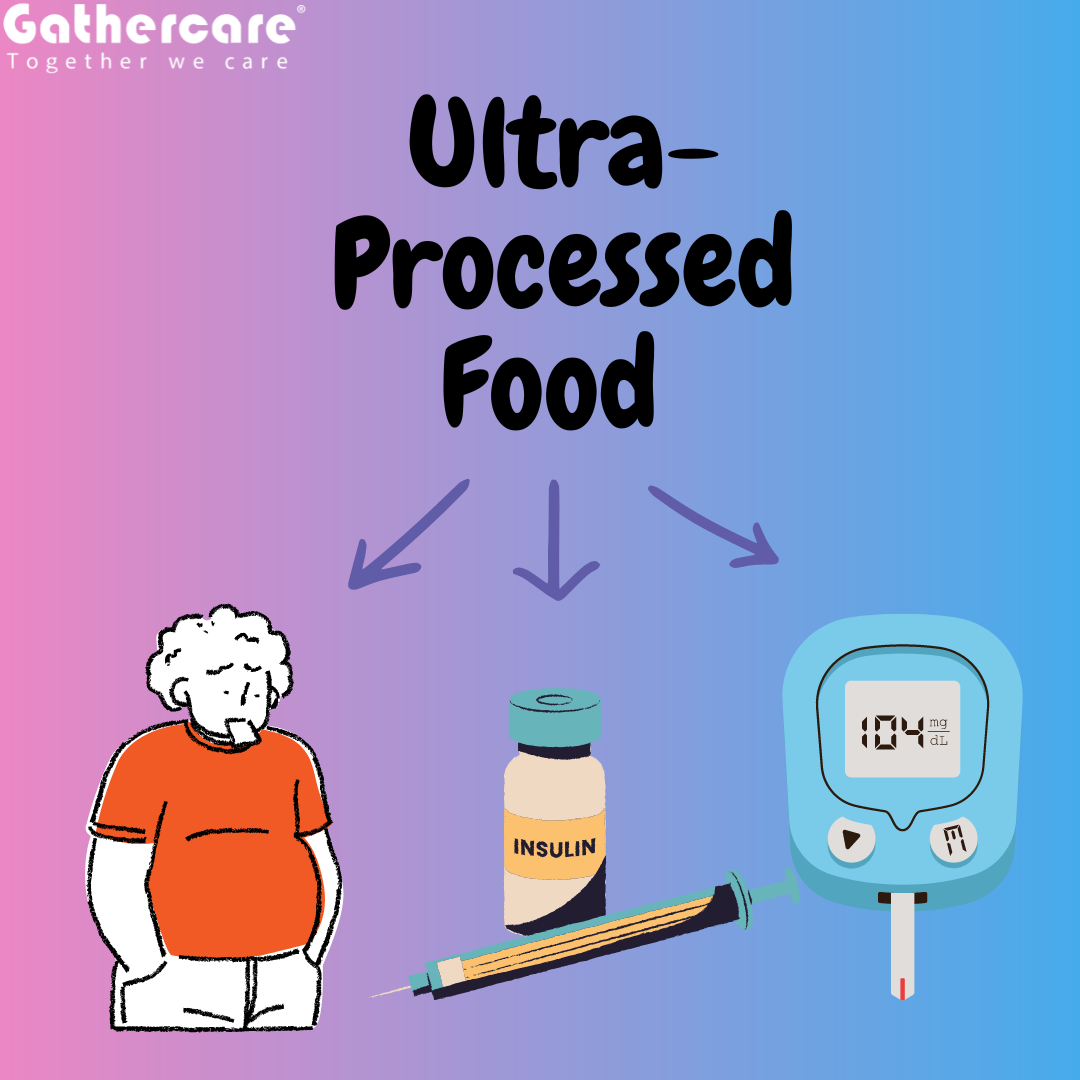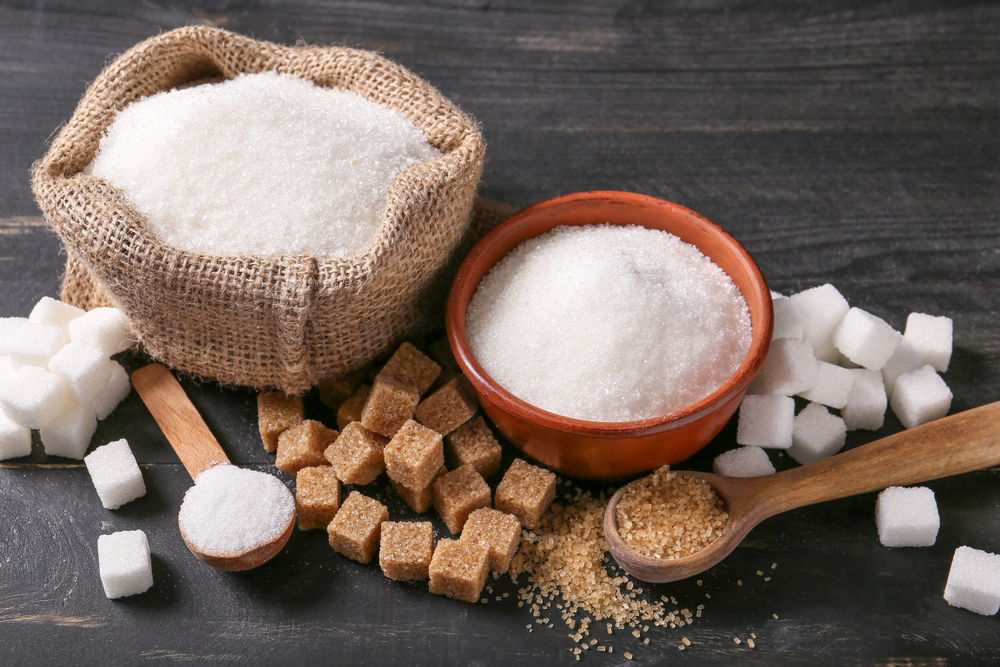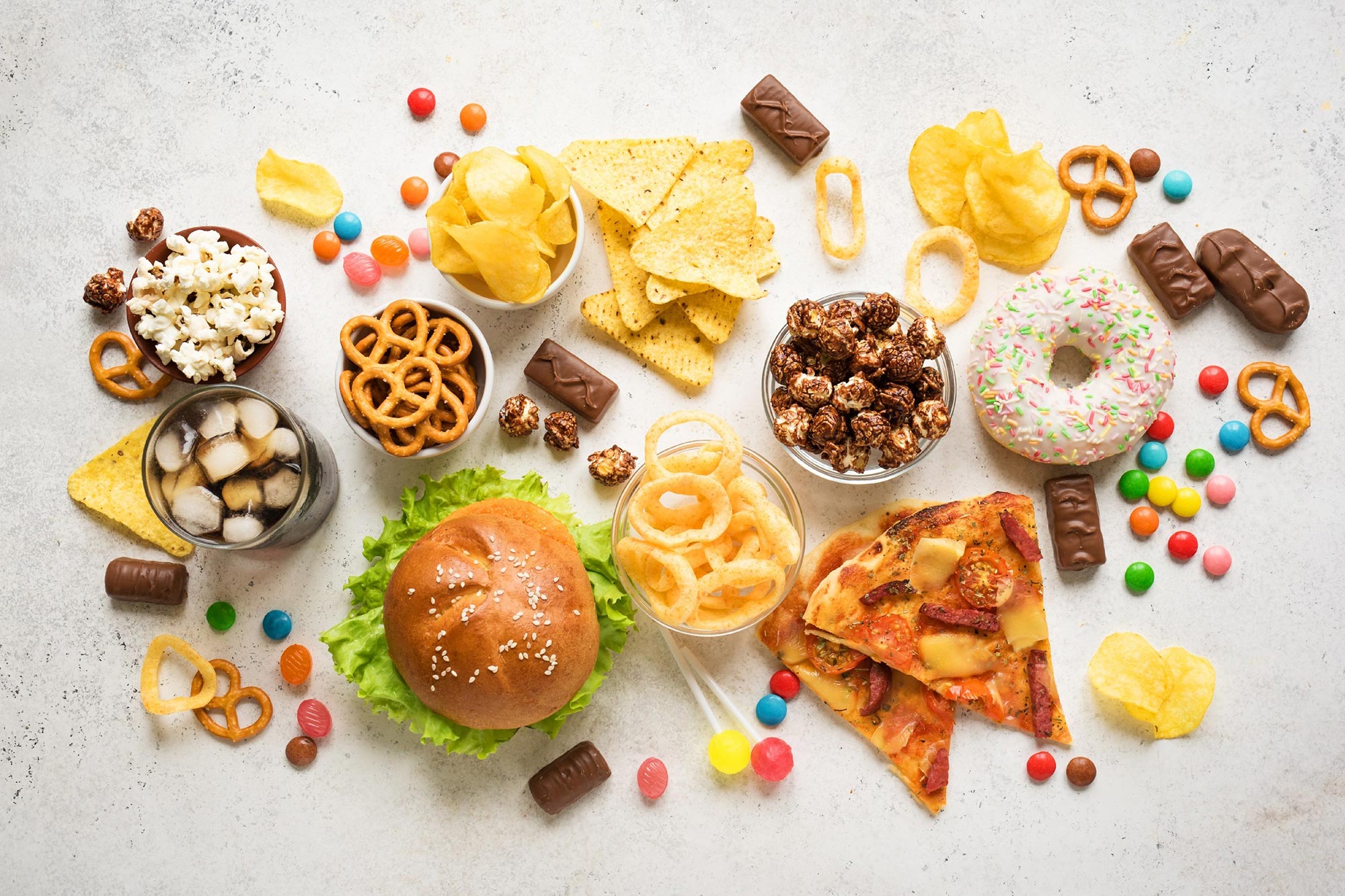Is Ultra Processed Food contributing more diseases to us?

Is Ultra Processed Food contributing more diseases to us?
Why does so many people are becoming obese and getting diabetes in such a short space of time? Are we eating the wrong food or just too much food? If you’re like many other people, you’re probably eating and drinking more sugar and processed food than you realize. That’s because it’s added to so many foods and beverages. Added sugar and processed food contributes calories but not nutrients as evidence links processed food to obesity, sugars to diabetes and heart disease.

Leptin ( Causes ) & Leptin resistance ( Treatment )
In 1994 we learnt about a hormone called leptin. A hormone (or chemical messenger) called leptin is produced in fat tissue and plays a significant part in controlling our metabolism and hunger by communicating with a receptor in our brains. The messages are subsequently translated by our brains into feelings of fullness (also known as satiety). As a result, you will stop eating and your body is then told to burn more calories. For 50 thousand years leptin worked very well but it stopped working about 30 to 40 years ago. It wasn’t because we Weren’t making enough leptin, or we weren’t leptin deficient but we were making too much leptin and the leptin wasn’t getting to the brain.
This is called leptin resistance. Leptin resistance causes you to feel hungry and eat more even though your body has enough fat stores. The seeming lack of leptin in leptin resistance also causes your body to enter starvation mode. Your brain decreases your energy levels which causes you to burn fewer calories while at rest in an effort to conserve energy. As a result of increasing hunger and slowing metabolism, leptin resistance intensifies obesity and leads to extra weight gain in the form of fat storage.
The reason for leptin resistance is the hormone insulin. Insulin blocks the signal from leptin getting to the brain in order to tell you’ve had enough. If insulin is the one causing the problem, why does our body release 2 to 4 times the amount of insulin today than what we did 40 years ago? The answer is sugar.

Sugar
When it comes to health, sugar has a bittersweet reputation . All foods that include carbs, including fruits and vegetables, grains, and dairy products, naturally contain sugar. It’s acceptable to consume complete foods that have natural sugar in them. Dairy foods contain protein and calcium, whereas plant meals are rich in fiber, vital minerals, and antioxidants. Since your body digests these foods slowly, the sugar in them offers a steady supply of energy to your cells. A high intake of fruits, vegetables, and whole grains also has been shown to reduce the risk of chronic diseases, such as diabetes, heart disease, and some cancers.
However, issues arise when you consume an excessive amount of added sugar, which is sugar that food producers add to items to enhance flavor or lengthen shelf life. American endocrinologist, Mr Robert Lustig says that, people don’t realize it, but we’re all eating too much sugar. The primary sources of added sugar are sweetened dairy, sugary drinks, sweets, baked products, and candy. However, savory foods like breads, tomato sauce, and protein bars can also contain sugar, making it all too simple to consume too much sweet food.
To complicate it further, added sugars can be difficult to identify on nutrition labels because they can be described under a variety of names, including sucrose, corn syrup, agave nectar, palm sugar, cane juice, and palm sugar. Mr Robert Lustig added that, we are consuming triple to quadruple the amount of sugar per day that our body can actually metabolise naturally. We are overdosed with sugar intake. Over 600 thousand items in the grocery store, 74% of them are spiked with added sugar. Added by the food industry for their own purposes, not yours.
The fact that the food industry knows that when they add it, we buy more, because they know that it’s got an addictive quality.
Much of the food we eat today contains lots of different ingredients combined together in lots of different ways. Whether it’s added sugar or added fat almost all of these foods have been altered in some way. Processed food makes up almost 80% of what’s available in your average supermarket. When you get down to it, many of these products contain at least one of only three core ingredients and none of them have any nutritional value.
According to retired Professor of Nutritional Biochemistry RMIT University, Melbourne, Professor Neil Mann, there are three commodities that food companies use in large amounts because they’re very cheap to make the huge ranges of processed food that are available to the public. First are refined starch from grains whether it’d be from corn, soy, wheat, barley, oats, rice. Second is sugar which is usually refined sugar, either from cane sugar which is sucrose or high fructose corn syrup and third major commodity is cheap vegetable oils. Combining these high-calorie, low-nutrient ingredients creates processed food. But it’s the ultra – processed variety which dominates our modern diets.

Ultra Processed Food ( Explanation & reasons for it to be unhealthy)
Whole foods that have not been processed or have only been lightly processed retain their vitamins, nutritional value and the food stays in its natural state. To make these items appropriate for storage and safe to eat, inedible components may be removed, and the food may be dried, crushed, roasted, boiled, frozen, or pasteurized.
A food’s original state is changed during processing. In essence, adding salt, oil, sugar, or other ingredients results in processed foods. Examples include fruits in syrup, freshly baked bread, canned fish and vegetables, and canned fish. Two or three ingredients make up the majority of processed foods. Some foods are adulterated even further to become highly processed or ultra-processed. They most certainly contain a lot of extra ingredients, like salt, sugar, fat, and synthetic coloring or preservatives. Fats, carbohydrates, added sugars, and hydrogenated fats are just a few of the ingredients used to make ultra-processed foods.
Additionally, they could have chemicals like stabilizers or artificial colors and tastes. Frozen dinners, soft drinks, hot dogs and cold meats, fast food, packaged cookies, cakes, and salty snacks are a few examples of these goods.
According to the Assistant Professor. PhD Health Sciences, Dr Wilma Waterlander, to put it in simple words, ultra processed food has this specific level of processing where a lot has happened to the food and it’s basically not at all recognizeable to the food it was originally. Heating gets rid of all the vitamin C in the product but also often a lot of additives are added so for example sugar, fat, salt and refined oils making them very energy dense and also not very nutritious. According to recent research, teenagers who consume ultra-processed food items including pre-packaged meals, sweetened morning cereals, and reconstituted meat products have a 45 percent higher chance of becoming obese.

Obesity
More than 1 billion people worldwide are suffering from obese, which includes 650 million adults, 340 million adolescents and 39 million children. This number is still increasing. World Health Organization have estimated that by 2025, approximately 167 million people adults and children will become less healthy because they are overweight or obese. Why are the numbers still increasing despite the advanced healthcare technology that ve now and the important question is what is obesity and what causes it ?
The important question is what is obesity, what causes it, and why are the numbers continuously rising?
What is Obesity ( Types & Causes )
Obesity is a chronic, multifactorial condition that can lead to excess body fat and, occasionally, poor health. Of course, excess body fat itself is not an illness. However, an excessive amount of additional body fat might alter how your body works. These changes are gradual and they could get worse by time, and they might have serious implications for your health. The Body Mass Index (BMI) are the ones used by healthcare providers to define obesity in the general population. In the BMI, average body weight is measured by average height. Healthcare professionals often categorize individuals with a BMI of over 25 overweight, and over 30 is obese. Obesity is frequently subdivided into 3 categories which are Class 1 : BMI of 30 to < 35, Class 2 : BMI of 35 to < 40 and Class 3: BMI of 40 or higher. Class 3 obesity is sometimes categorized as “severe” obesity.
Obesity is typically brought on by excessive eating and insufficient exercise. A large portion of the excess energy will be stored by the body as fat if you ingest large amounts of energy, especially fat and carbohydrates, without expelling it through exercise and physical activity. Obesity does not occur suddenly. It gradually appears over time as a result of poor dietary habits and lifestyle decisions. This is where ultra-processed food comes into play because it contains high levels of sugar and fat, which contribute to body fat.
Another significant factor that contributes to obesity is a lack of physical activity. Many people’s work professions require them to spend the majority of the day seated at a desk. Additionally, they rely on their cars more than they do cycling or walking. Most people rarely engage in regular exercise when they are relaxing instead preferring to watch TV, browse the internet, or play computer games. Besides that, some people claim there’s no point trying to lose weight because “it runs in my family” or “it’s in my genes”. Although there are a few rare hereditary disorders, such Prader-Willi syndrome, that can lead to obesity, most people can reduce weight without any problems. It may be true that some genetic characteristics you received from your parents, such as having a big appetite, make losing weight harder, but it’s not impossible.
Obesity frequently has more to do with environmental variables, such poor eating practices picked up in childhood. In some cases, underlying medical conditions may contribute to weight gain. These include an underactive thyroid gland (hypothyroidism) – where your thyroid gland does not produce enough hormones. Cushing’s syndrome – a rare disorder that causes the over-production of steroid hormones. The accumulation of an excessive amount of body fat can cause type 2 diabetes, and the risk of type 2 diabetes increases linearly with an increase in body mass index. Accordingly, the worldwide increase in the prevalence of obesity has led to a concomitant increase in the prevalence of type 2 diabetes. Obesity also causes diabetes to worsen faster.

Diabetes
Diabetes is a chronic condition caused by either insufficient insulin production by the pancreas or inefficient insulin use by the body. A hormone called insulin controls blood sugar levels. Uncontrolled diabetes frequently results in hyperglycemia, also known as high blood glucose or raised blood sugar, which over time causes substantial harm to a number of the body’s systems, including the neurons and blood vessels.
Diabetes (Types & Symtoms & Causes)
Diabetes type 1 (formerly called insulin-dependent, juvenile, or childhood-onset) is defined by insufficient insulin synthesis and requires daily insulin therapy. The symtoms for type 1 diabetes are excessive excretion of urine (polyuria), thirst (polydipsia), constant hunger, weight loss, vision changes, and fatigue. And these symptoms may occur suddenly. Type 1 diabetes occurs when your immune system, the body’s system for fighting infection, attacks and destroys the insulin-producing beta cells of the pancreas. Scientists think type 1 diabetes is caused by genes and environmental factors, such as viruses, that might trigger the disease.
Type 2 diabetes, also known as non-insulin-dependent or adult-onset diabetes, is carried on by the body’s inefficient use of insulin. Type 2 diabetes affects more than 95% of patients with diabetes. The main causes of this form of diabetes are being overweight and being physically inactive. Although frequently less severe, the symptoms of type 2 diabetes might be comparable to those of type 1. As a result, the condition may not be discovered until after it has developed problems. This type of diabetes was previously exclusively found in adults, but it is now increasingly common in children as well. Type 2 diabetes—the most common form of diabetes—is caused by several factors, including lifestyle factors and genes.

Conclusion
The biggest lesson we can get from this is that as a society, we are oblivious to the value of maintaining good physical and mental health. Our dependency on medical treatment has grown to the point that the quantity of care we receive is having an impact on its quality. We must begin modelling a healthy lifestyle for the next generations. “Healthy living” refers to sustaining a healthy lifestyle and forming healthy habits. Although it can be challenging, there are steps you can do to improve your health. Identifying unhealthy habits and adopting new, constructive ones to replace them each day is a good start.











